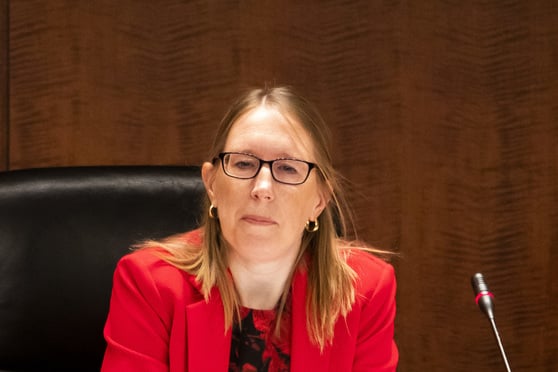Although more people recognize that there is a retirement savings crisis in the U.S., many don’t know how to educate people about what it means to save for their future. Casual video games, cartoons and mobile phone apps are the newest ways companies and nonprofits are trying to reach people with financial education. Here are three of the most popular (and innovative) examples.
Kicking around the financial football

(Image courtesy Visa Inc.)
Visa Inc. has been developing financial literacy programs for all age groups since 1995, using unique means to reach people in ways that they learn best. The company relaunched its Financial Football and Financial Soccer games in 2010 because it wanted to bring financial information to people through things they are passionate about, like professional sports and video games.
“We’re not trying to be trendy. Learning about money management is perennially painful for people. It is scary or they have guilt because they are not doing well enough,” said Jason Alderman, senior director of financial education for Visa Inc. “It is very hard to get people to engage, but the fundamentals haven’t changed in eons. Budgeting, saving, responsible spending and the good use of credit, those principals are already in place. The challenge is how to make it compelling. How do you take this scary subject and demystify it and make it easy to access.”
Today’s consumers are attached to their gadgets, so reaching them on those gadgets “makes the subject a lot easier to access than if it was coming from on high from a teacher, in a lecture or seminar,” Alderman said.
Visa sponsors the NFL so it thought, “why not take the high-profile assets of the NFL and the people who have a real passion about football. People care strongly about their NFL team, so let’s harness that passion to make it fun. That’s when Financial Football came about,” he said.
In the game, the player gets to choose which team he or she is playing for and who their rival will be. The game is played like real football, but to complete a play, the player must answer financial questions about everything from savings and interest to IRAs and 401(k)s. The goal of the game is to get people familiar with financial terminology.
“That’s one of the off-putting things for people. A lot of banking and financial terminology is mystifying. We teach a lot of definitions so people understand what words mean,” he said. The game provides different situations that involve finances to help people learn and grow their financial knowledge base as they play and advance through the different levels.
When the game was first launched in 2004, it targeted middle and high school students. Teachers used it in classrooms to teach financial education. But recently, the military and for-profit corporations have shown an interest in the game to open the dialogue about saving, investing and getting out of debt.
A report by The Patrick Collins Group, LLC in 2011 looked at the many educational tools people use to improve Americans’ Financial Literacy. It found research from the University of Florida that supported the concept of online games as a means of education.
The researchers observed students who played educational video games over an 18-week period. Students who played the games did better on district benchmark exams than students who had not played the games. Students who played the games made gains of 8.07 points, out of 25, while students who didn’t play the games only increased their scores by 3.74 points.
“One reason for the greater gains is that games provide immediate feedback when things go wrong and rewards when they do not. Recognizing the power of this type of educational engagement, financial organizations are moving to change the way they deliver information to consumers,” the report found.
Visa’s Financial Football game was tested at 17 West Virginia high schools. Students were tested on financial concepts before they played the game, and 53 percent answered half or more of the basic financial questions about common financial tools, such as checking accounts, incorrectly, according to The Patrick Collins Group report. “By the end of their online experience, 92 percent of the students correctly answered such questions, as well as more sophisticated questions, about interest rates and risk. This was the result of having been exposed to the information repeatedly as they attempted to improve their scores in the game.”
Next: Taking a bite out of retirement

Taking a bite out of retirement
The Doors to Dreams Fund (D2D), a not-for-profit based in Boston, also has tried to harness technology to provide what it calls financial entertainment.
The company has a number of video games that address everything from how to get out of debt, save money and build assets to how to use a tax refund.
Its retirement game, Bite Club, tries to capitalize on people’s love of all things vampire and their addiction to online games like Diner Dash and Farmville as they run a nightclub for vampires. The goal is to teach lessons about retirement, said Nick Maynard, director of innovation for D2D.
Bite Club is a simulation that takes players from their early 20s through their 60s through 15 rounds of game play, forcing them to practice making key financial decisions, like reducing debt before they can invest more in their nightclub. It also teaches them retirement saving strategies and how to balance spending money on what they want vs. what they need.
He calls the work they do “chocolate-covered broccoli” because the organization is taking concepts and ideas that are good for everyone to learn and making them palatable.
“How can we leverage cultural touch points, like games, to encourage people to engage in topics and content that is valuable to them?” he asked.
People love casual games, like Angry Birds, Bejeweled and Tetris. They are easy and quick to play. They are not hard to learn. That’s what D2D wanted to bring to the financial education space.
“We wanted to reduce anxiety and stress. People get stressed out when dealing with financial literacy topics. By leading with fun, farms and vampires, by framing things in those ways, we want to get people engaged in things that seem very pleasurable. It helps with learning and cognitive outcomes. When people have less stress and anxiety, they are more prone to take in what they are experiencing,” Maynard said.
D2D builds assessments and testing into all of its games, and so far the organization’s games have been very successful. People experience double-digit increases pre and post play.
Besides Bite Club, D2D has some very successful financial games called Celebrity Calamity, which discusses credit card debt, and Farm Blitz, that teaches about interest, compounding and diversification of assets. The goal of all of these games is to get people to take real world action, Maynard said.
Staples partnered with D2D to offer Bite Club to its employees. It adapted the game to include links to the company’s retirement plan website. The goal is to get employees to either put money aside in the company retirement plan or up their retirement plan contributions.
“Through this partnership, creative marketing has come out of it,” Maynard said. Staples used vampire posters to get people interested in the game. Instead of sending out big packets of financial information nobody will read, they advertise the game to get people moving in the right direction.
There has been strong interest in the game, with more than 9,500 visits to the game portal. In direct mail tests, the response has been in the 3.5 to 4.5 percent range. The average response for direct mail is 2 percent, so “we’re very excited about it,” he said.
Staples launched the game in September 2011 by hosting a Bite Club tournament at a certain number of its stores. There was an 80 percent response rate to the tournament. New York Life, which is Staples’ retirement plan provider, said that it had an 11 percent response rate from one postcard it sent out about the game, meaning that 11 percent of the Staples employees who received the card went to the New York Life site and enrolled in the plan or increased their retirement plan contributions.
Next: Animation as financial motivation

Animation as financial motivation
Aspiriant, a U.S.-based wealth management company, has taken a different direction in financial education. The company felt that it wasn’t doing a good enough job of educating potential clients about the benefits of having a financial advisor, so it came up with the idea of putting a short animated feature on its website to help educate its more affluent clients about the benefits of financial advice.
Cammie Doder, director of business development at Aspiriant, said that she stole the idea from JetBlue, which used a cartoon to give its safety demonstration.
“It was the only time I’ve watched the safety demonstration. I thought it was clever. Safety is important, so you can’t have too much fun with it, just like our clients’ financial lives. We have to be serious, but we can have some fun with it,” she said. The JetBlue safety video struck a nice balance because it gave the required information but was “engaging from start to finish,” she said.
Aspiriant’s cartoon tells the story of what the company can do for its clients, using a fictitious cartoon character named Tom, who is based on many different client case studies.
“We are so passionate about what we do in terms of helping our clients in so many facets. We help our clients be good stewards of their wealth. We want our prospective clients to see the power it brings to them and their family, and the control,” Doder said. “We hope our animated video helps them understand this offering and what it would bring to their families.”
Complete your profile to continue reading and get FREE access to BenefitsPRO, part of your ALM digital membership.
Your access to unlimited BenefitsPRO content isn’t changing.
Once you are an ALM digital member, you’ll receive:
- Breaking benefits news and analysis, on-site and via our newsletters and custom alerts
- Educational webcasts, white papers, and ebooks from industry thought leaders
- Critical converage of the property casualty insurance and financial advisory markets on our other ALM sites, PropertyCasualty360 and ThinkAdvisor
Already have an account? Sign In Now
© 2025 ALM Global, LLC, All Rights Reserved. Request academic re-use from www.copyright.com. All other uses, submit a request to [email protected]. For more information visit Asset & Logo Licensing.








